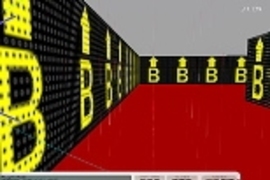The Education Arcade, a new initiative involving MIT researchers, aims to transform the way video and computer games are used in the classroom.
The Education Arcade is led by MIT's Comparative Media Studies program (CMS) and the University of Wisconsin's School of Education. It will develop and coordinate research by scholars, international game designers, publishers, educators and policymakers.
"We want to lead change in the way the world learns through computer and video games. Our mission is to demonstrate the social, cultural and educational potentials of games by initiating new game development projects, and by informing public conversations about the broader and sometimes unexpected uses of this emerging art form in education," said Professor Henry Jenkins III, CMS director in MIT's School of Humanities, Arts and Social Sciences.
Once integrated into pedagogy, game programs won't be used as a "fun 'add-on' or bonus for when you complete your work, but as a full-fledged part of the class," said Eric Klopfer, director of the Teacher Education Program at MIT and assistant professor in urban studies and planning.
"Gaming technologies have improved and diversified to engage a much wider range of interests and abilities. Students are interested and ready to play, and we are providing the technologies and curriculum. The technical and strategic interest in this approach from students and faculty at MIT has rapidly propelled us to the front of the pack," Klopfer said.
The Education Arcade (http://www.educationarcade.org) expands on the now concluded Games-to-Teach Project funded by the Microsoft iCampus initiative. Games-to-Teach developed a suite of conceptual frameworks to support learning across math, science, engineering and humanities curricula. Working with industry game designers and MIT faculty, researchers used innovative game concepts to show how advanced math, science and humanities content could be blended with state-of-the-art game play.
Researchers who participated in the Games-to-Teach Project worked with teachers and students at MIT, Boston College, and middle and high schools in the Boston area to "perform investigations on a scale that simply can't be achieved without the creative use of technology," Klopfer said.
In one instance, MIT students taught middle schoolers to use "Supercharged," a game in which a "charged" spaceship must be navigated through electric fields. In another, high school students, in collaboration with educators at the Drumlin Farm Audubon Society, explored a simulated environmental disaster using a game called "Environmental Detectives."
A version of this article appeared in MIT Tech Talk on November 19, 2003.







